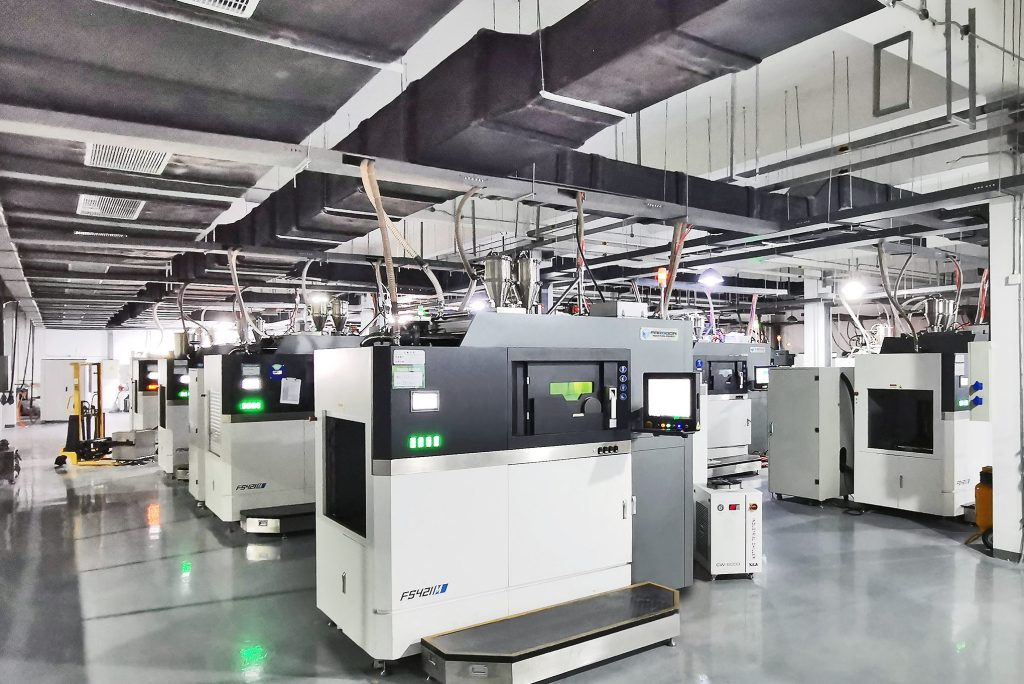中国航空航天公司Galactic Energyhas turned to 3D printing to build the country’s largest reusable rocket engine to date.
Galactic Energy’sWelkin 50-ton LOX/kerosene engine特征超过30Farsoon-3D printed parts, including a turbo pump and LOX/kerosene main valve housing. Since integrating these cost and lead time-optimized components, the firm has gone on to verify the engine’s ignition, starting, and transition performance, via a full-system test.

Falcontech’s 3D printing exploits
Based in the city of Wuxi, Falcontech is aYinbang-backed provider of production services that cover powder R&D, performance testing, reselling, CNC machining, 3D printing, and isostatic pressing. In practice, the firm divides its business into three divisions: Special Metal Powder, Special Manufacturing Technology, and 3D Printing, the latter of which serves aerospace, medical, and molding clientele.
To address this demand, Falcontech not only deploys its farm ofEOS,Renishaw, and Concept Laser machines, but calls upon the‘SuperAM’ 3D printing facilityit bolstered in 2020 with 20 Farsoon systems. Having already used theFS421M,FS301M, andFS271Mto 3D print various aerospace parts, it was said at the time that Falcontech aimed to install a further 30 Farsoon printers, taking its total to 50.
Falcontech boasts of its portfolio’s potential to develop consolidated, lightweight aerospace builds with improved performance, thanks to their complex, topology-optimized designs. Having been tapped by Galactic Energy, it appears that the company’s services are now enabling the development of an engine that could become critical to China’s launch capabilities in the years to come.

银河能源的韦尔金引擎
According to Galactic Energy, the Welkin is China’s first reusable large-thrust open-cycle LOX/Kerosene rocket engine. Featuring a variable area pintle type injector, and a unique geometry that combines film and regenerative cooling, the propulsion system is designed to provide 40 tons of variable thrust at a thrust-weight ratio of over 120:1.
Critically, the Welkin’s variable thrust capabilities enable it to drop booster levels for soft landings, while its fault detection and isolation functionalities facilitate continued re-use. As such, it’s said that the engine can be redeployed up to 50 times, putting it in the same reusability category as the Merlin rocket engine developed atSpaceX.
Interestingly, rather than producing the Welkin’s 3D printed parts in-house, Galactic Energy chose to outsource them to Falcontech in 2019. To fulfil this order, the latter deployed Farsoon PBF, as well as DED, and CNC machining, over a four-month period. It’s said that conventionally producing the thrust chamber parts would have taken some 25 days, but 3D printing them took just four.
By redesigning the engine’s turbo pump, it’s also understood that Galactic Energy has managed to improve its efficiency by 5%, and following full-system testing, the operation, structural design, and coordination of each of the Welkin’s assemblies have now been confirmed, moving it a step closer to launch applications.
Once ready, the engine will reportedly be used to power thePallas-1, an eight-meter-high launch vehicle that’s set to be capable of launching groups of satellites into orbit. While Galactic Energy’s other rocket, theCeres-1, has already been deployed, the commissioning of its new offering could be significant in that it’s highly reusable, potentially making it China’s answer to the USA’sSpaceX Falcon 9.

银河能源的韦尔金引擎is just the latest in a string of recent aerospace propulsion systems to have benefited from 3D printed parts. In the UK,Skyrora’s fully 3D printed rocket engine在2022年6月,经过热火测试,并带有鲜艳的颜色。在这个领域的另一个新玩家,Ursa Major, also introduced itsArroway LOX and methane enginelast year, as an alternative to Russia’s RD-180 and RD-181.
Elsewhere,Launchercontinues to make progress with its3D printed E-2 liquid rocket engine, which passed another testing milestone in April 2022. During a test at theNASA Stennis Space Center,该系统首次达到了名义推力,压力和氧化剂/燃料混合物的评估,并连续发射40秒。
To stay up to date with the latest 3D printing news, don’t forget to subscribe to the3D Printing Industry newsletteror follow us onTwitteror liking our page onFacebook.
While you’re here, why not subscribe to ourYoutubechannel? featuring discussion, debriefs, video shorts and webinar replays.
Are you looking for a job in the additive manufacturing industry? Visit3D Printing Jobsfor a selection of roles in the industry.
Featured image shows Farsoon’s FS421M metal 3D printers installed at Falcontech’s Super AM Factory. Image via Falcontech.



